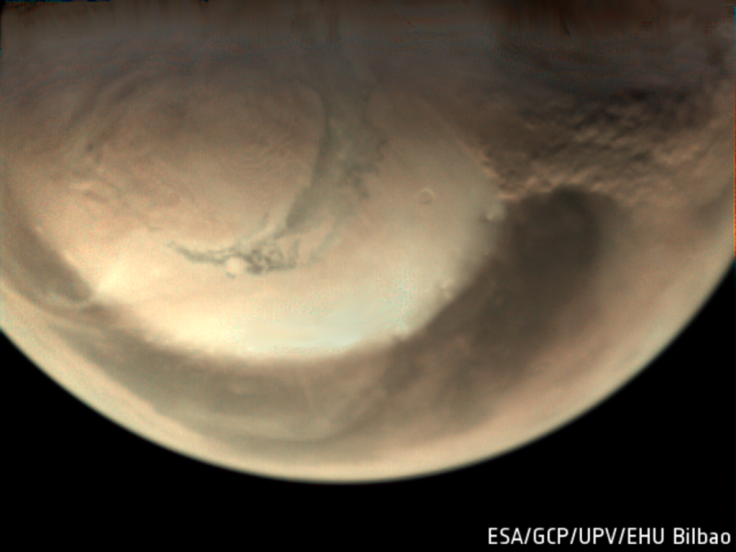Scientists Believe They Discovered Impact Crater That Caused Mars' Mega-Tsunami

Researchers believe they have identified the impact crater created by a massive asteroid strike on Mars. According to their study, the crater could be the point of origin of a mega-tsunami that ravaged Mars.
The team of researchers, as well as other scientists, believe that a liquid ocean existed on Mars about 3.4 billion years ago. In a new study published in the Journal of Geophysical Research: Planets, the researchers theorized that this huge body of water may have been displaced due to a massive meteor impact on the Red Planet.
Since Mars is littered with craters, the researchers had to analyze each of them in order to find the one that showed traces of an impact as well as a tsunami. One of the craters that caught their attention was Lomonosov.
According to their study, this crater is about 75 miles wide. Given its size, the researchers estimated that the asteroid that created the crater could be as big as the space rock that crashed on Earth 66 million years ago and triggered an extinction-level event.
Aside from the size of the crater, the researchers also noticed that a portion of Lomonosov’s wall or rim was missing, which suggests that it was destroyed following the displacement of a huge body of water.
Based on the evidence they have gathered, the researchers noted that Lomonosov is a strong candidate as the impact crater where a tsunami originated from. For them, their findings indicate that the large ocean on Mars was displaced by the tsunami following a major asteroid impact.
If the massive asteroid didn’t hit the Red Planet, the researchers said the liquid ocean on Mars could have existed for a longer time, or at least about an additional four to five million years.
“The implication is that the ocean would have retained a liquid component for a very long time,” Alexis Rodriguez of the Planetary Science Institute in Arizona and co-author of the study told Space.com.
Despite the results of the study, Rodriguez noted that follow-up investigations are yet to be completed in order to determine if Lomonosov really is the crater that caused the tsunami.
© Copyright IBTimes 2024. All rights reserved.





















